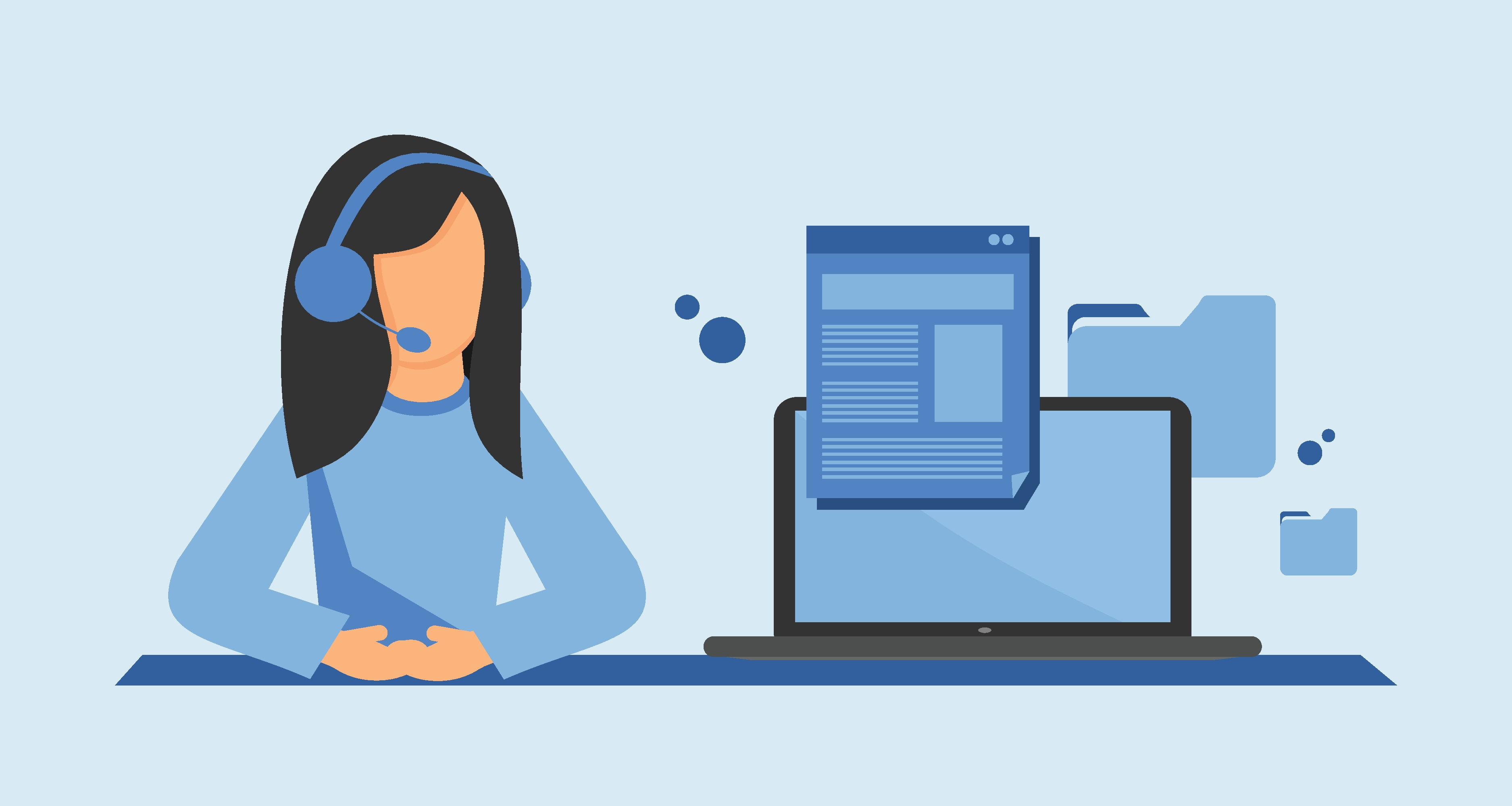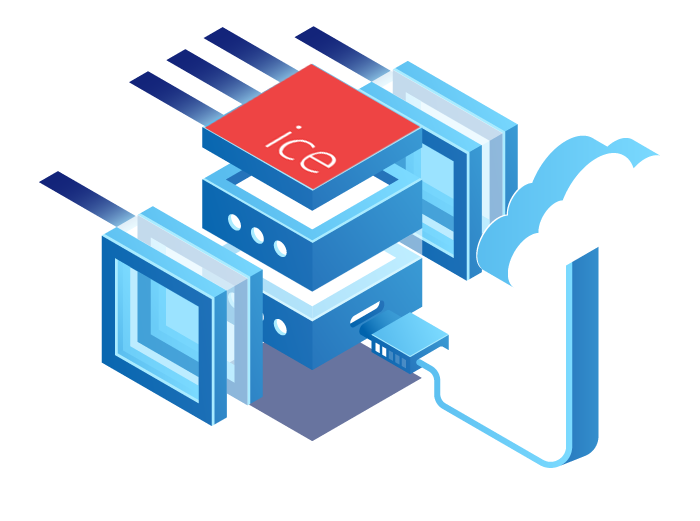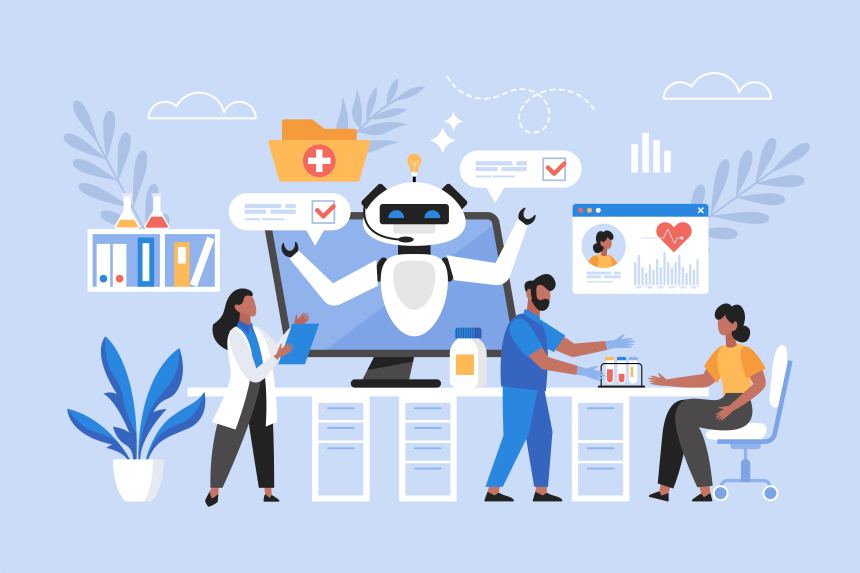Featured
Call Center Monitoring: Tools, Features and Best Practices
by Kent Mao | Published On January 30, 2024 | Last Updated April 25, 2024

Call center monitoring is essential for streamlining operations and delivering an exceptional customer experience.
Whether you work at a call center, operate one, or have reached out to a company’s service team yourself, you’re probably familiar with this phrase:
“This call may be monitored for quality assurance purposes.”
There’s a good reason why that phrase is so common in the contact center landscape. Call monitoring is essential to increasing and maintaining high levels of customer satisfaction, efficiency, and productivity.
The only way to ensure you’re living up to customer expectations and running your contact center effectively is to monitor conversations and track crucial metrics. Call center monitoring is how you find gaps in agent skills, customer pain points, and even call quality issues so you can fix them.
In this guide, we've cover why call center monitoring is so important, best practices for call center monitoring, and the top software tools on the market today.
What is Call Center Monitoring?
Call center monitoring is the process of collecting, analyzing, and leveraging data from contact center communications. It involves curating information about your call center’s performance, such as employee efficiency and average handling times.
Call center monitoring also looks at factors that affect customer satisfaction scores, such as clear communication, active listening, and transfer rates. It typically involves listening to live or recorded calls and analyzing customer-agent interactions.
On a basic level, call center monitoring is a type of quality assurance (QA) that involves tracking and evaluating agent performance. It’s also a crucial resource for improving customer experience. After all, 63% of customers say companies need to improve at “listening to feedback.”
Monitoring your call center will help you determine how the experience you’re providing is affecting your customer acquisition, conversion, and retention rates. It’s also how you ensure you’re training your employees to reach their full potential.
Call Center Monitoring Features
Most call centers have tools that allow supervisors to monitor live calls. Features like whisper and barge allow supervisors to listen in and join live calls as a third-party.
Here are some of the most common monitoring features that you will find in a call center:
- Listen: This call monitoring feature enables a supervisor or manager to listen in on a live call between an agent and a caller without alerting either party involved in the conversation.
- Whisper: Call whisper allows a supervisor to join the call and talk directly to the agent without the caller being able to hear. This helps provide real-time coaching or assistance to call center agents who need it.
- Barge: Call barge or call barging allows a supervisor to join a call and speak to both the agent and caller. When a supervisor initiates a call barge, it transforms the call into a three-way conversation.
- Takeover: The supervisor is able to assume full control of the call while removing the agent from the conversation. This is a rare option usually reserved for when an agent makes a serious mistake.
Why is Call Center Monitoring Important?
 Call center monitoring can deliver a range of benefits. It can help you actively pinpoint why customers contact you, and what causes them to abandon your brand. It also ensures you can learn about the customer’s journey and how your employees can optimize it.
Call center monitoring can deliver a range of benefits. It can help you actively pinpoint why customers contact you, and what causes them to abandon your brand. It also ensures you can learn about the customer’s journey and how your employees can optimize it.
Call center monitoring is essential to preserving the performance of your contact center and your brand. After all, organizations risk losing up to billions in revenue through bad customer experiences.
With effective call monitoring strategies, you can get the following benefits:
Improved call quality
High-quality calls are crucial to effective communication with customers. Call performance monitoring helps you to track whether insufficient bandwidth, poor internet connections, or other factors are leading to dropped or fuzzy calls. This can reduce your risk of frustrated customers and lost connections. Call quality monitoring tools can offer insights into everything from call quality trends and details to voice quality scores.
Enhanced customer satisfaction
Happy customers are the key to a successful business. The more you evaluate customer interactions, the easier it is to pinpoint which strategies improve satisfaction scores (CSAT) and retention rates and which lead to customer churn. Call monitoring tools can help you identify everything from customer sentiment to effort and intent to ensure you’re presenting the correct response in every interaction.
Improved agent experience
Call center monitoring ensures you can gain accurate insight into how well your agents are performing. It can provide insights for training purposes, to help you enhance the abilities of your team members. Plus, it can assist with finding friction points in the call journey that can harm agent productivity and satisfaction. Happier, more informed agents lead to happier, more loyal customers.
Best Practices for Call Center Monitoring
Implementing a call monitoring strategy can be tricky. Here are the best practices contact center leaders can follow to ensure success.
Set clear goals and KPIs
To ensure success with call center monitoring, implementing a clear strategy should be the first step. Decide what you want to accomplish with your call monitoring strategy in advance, and which specific KPIs and metrics you should be monitoring. For instance:
- If you’re trying to improve efficiency, you might monitor average handling times.
- If you want to boost customer satisfaction, you may look at average talk time and waiting times.
- If you need to improve your reputation, you might look at customer satisfaction (CSAT) and net promoter (NPS) scores.
Knowing exactly what you want to accomplish and how you can track your success will ensure you’re leveraging the right metrics within your call monitoring and analytics tools.
Record and monitor as much as possible
With contact centers now handling higher volumes of interactions than ever before, it might be tempting to consider monitoring only a handful of your calls. However, this leaves you with an inaccurate and incomplete dataset to work with.
Ensuring your software can monitor every call, or as many as possible, will give you a deeper understanding of your call center operations, customer sentiment, and agent activities. Choose a solution that proactively monitors every call, whether you’re interacting over Microsoft Teams or on your contact center software.
Gather customer feedback
A comprehensive call center monitoring strategy should go beyond looking at data and numbers for things like “average handling time”. To fully understand how certain actions are influencing your relationships with your customers, you need qualitative metrics.
This means consistently obtaining feedback from your consumers after each conversation. While not every customer will respond to a request for feedback, you can make it easier for them by allowing them to automatically “rate” aspects of their call, like voice quality or handling speed.
Share feedback with agents
The insights you gather with your call monitoring strategy aren’t just useful for supervisors and business leaders. They can also be excellent for driving the success of your agents. Consider using wallboards and customizable dashboards for team members, showcasing the key metrics your business is currently focusing on.
This will help to keep agents motivated, focused, and engaged. It will also ensure supervisors can rapidly pinpoint areas where agents are struggling, so they can provide the relevant training.
Use the right software tools
Easy-to-use, effective, and flexible software is essential for a good call center monitoring strategy. There are various types of software tools that you can use to monitor calls.
- Call recording software: Recording your calls makes it easier to cultivate insights that you can use for training and other business insights. Plus, recording tools will help to ensure you remain compliant with industry regulations.
- Speech analytics: Speech analytics tools are excellent for diving deeper into the emotion, sentiment, and intent of every call at scale. They provide deeper insights into the voice of the customer and outline agent performance levels.
- Automatic call scoring: Automatic call scoring software gives a numerical score to each call made and received by your staff. Scores are distributed based on factors like adherence to scripts, clarity, empathy, and other factors.
- Workforce management software: Workforce management software ensures you can use the insights you’ve gathered from your call monitoring strategies to implement effective strategies for scheduling and workforce planning. It can also help with distributing training and insights to agents to help them improve their performance.
Best Call Center Monitoring Software Tools

The right software tools can make all the difference for your business. They can help supervisors track performance, analyze customer interactions, and identify areas for improvement. Choosing the right tool depends on various factors, including the size of your operation and your budget.
From all-in-one platforms to workforce optimization solutions, here's a roundup of the top software tools for call center monitoring.
ComputerTalk ice
ComputerTalk ice offers a comprehensive suite of cloud-based contact center solutions, including call monitoring, quality management, and performance analytics. Its advanced data-driven capabilities enable organizations to gain actionable insights into customer interactions and agent performance.
Features:
- Omnichannel cloud platform
- Call recording and monitoring
- AI-powered tools
- Real-time performance monitoring and analytics
- Microsoft Teams-enabled
Best For: Companies of all sizes that value user-friendly software and are looking for a flexible, cloud-based contact center platform.
Observe.AI
Observe.AI is a conversational analytics platform that leverages artificial intelligence and machine learning to analyze customer interactions and provide actionable insights for contact centers. The tool integrates with most leading contact center platforms and is capable of monitoring your entire call center team.
Features:
- Sentiment analysis
- Speech recognition
- Keyword and phrase detection
- Customizable dashboards
- Real-time analytics and alerts
Best For: Companies looking to deeply understand customer interactions and improve service quality through advanced analytics.
Balto
Balto is a real-time guidance software designed for call centers to improve agent performance, compliance, and customer satisfaction. Combining artificial intelligence and call monitoring, Balto listens to conversations as they happen and provides agents with live, on-screen prompts. These prompts can include responses to customer queries, compliance reminders, sales techniques, and more. This immediate feedback helps agents handle calls more effectively, adhere to scripts and regulations, and improve their interactions with customers.
Features:
- Real-time guidance
- Speech analytics
- Customizable playbooks
- Gamification tools
- CCaaS integrations
Best For: Businesses looking to enhance their contact center with an AI-powered call monitoring system.
Tethr
Tethr is a comprehensive solution for call center monitoring and conversation analytics. It leverages powerful AI algorithms to analyze and derive insights from customer interactions, such as phone calls, live chats, and emails. Tethr integrates with most contact centers as well as leading CRMs including Microsoft Dynamics and Salesforce.
Features:
- Speech analytics
- Emotion detection
- Customizable dashboards and reports
- Quality assurance workflows
- Compliance monitoring
Best For: Companies seeking to mine conversation data for insights into customer satisfaction, operational improvements, and compliance monitoring.
Talkdesk
Talkdesk is a leading cloud-based contact center solution with advanced monitoring and analytics capabilities. Its AI-driven analytics engine enables real-time monitoring of calls, SMS, and chat interactions. Talkdesk offers features like sentiment analysis, emotion detection, predictive analytics, and performance reporting.
Features:
- Cloud-based platform
- AI-powered tools
- Workflow automation
- Quality management
- Call whisper and barge-in
Best For: Companies of all sizes seeking a cloud contact center platform that emphasizes ease of use.
Zoho Desk
Zoho Desk is a cloud-based help desk software solution that helps agents deliver better customer support. It is designed to boost agent productivity and enhance the customer service experience through ticket management, automation, and multichannel support. Zoho Desk also offers features like call recording, call logs, performance analytics, and seamless integration with other Zoho products for comprehensive customer support management.
Features:
- SLA management
- Ticket collaboration and management
- Call recording
- Task automation
- Real-time dashboards and reports
Best For: Small to medium-sized businesses looking for an affordable customer service and call center solution within the Zoho ecosystem.
Zendesk Talk
Zendesk Talk integrates seamlessly with Zendesk's suite of customer service solutions and offers robust monitoring features. It provides real-time tracking of key metrics such as call volume, wait times, and agent performance. Zendesk Talk also offers call recording, voicemail transcription, performance analytics, and can easily integrate with existing systems.
Features:
- Click-to-call functionality
- Call recording
- Call monitoring and whisper coaching
- Mobile accessibility
- Voicemail and text messaging
Best For: Businesses already utilizing Zendesk for customer support and wishing to add voice as a channel.
Verint
Verint, a global leader in customer analytics software, offers a workforce optimization solution that includes call recording, quality management, and performance analytics. Their solution provides real-time insights into call center operations, enabling organizations to identify trends, optimize processes, and drive continuous improvement.
Features:
- Workforce management
- Agent adherence monitoring
- Intraday management
- Speech and desktop analytics
- Quality management
Best For: Companies looking to add workforce optimization and performance management capabilities to their contact center.
Challenges with Call Center Monitoring
Unfortunately, while effective call monitoring is crucial to success in today’s customer experience landscape, it’s not always easy to manage. There are two challenges that companies regularly face when implementing their own call monitoring strategy.
The first is a growing influx of data in the contact center landscape. Every day, contact centers gather huge amounts of data from various channels. Much of this data may be useful to optimize your contact center’s performance, but it can be difficult to sort through the volume.
The key to overcoming this challenge is figuring out which data you need to monitor. Defining what success looks like for your business, which KPIs you need to monitor, and what goals you want to achieve will ensure you can focus on the most relevant data without being overwhelmed.
Implementing the right contact center call monitoring software can also help, by providing you with a central solution for gathering data from different environments and organizing it into an easy-to-understand visual format. For instance, the iceMonitor system allows companies to customize their monitoring reports according to their specific needs.
It offers easy-to-read visual summaries of contact center activities and allows users to drill down into specific details about queues, users, and teams. This technology can also help address the second challenge with contact center monitoring: keeping teams coordinated.
For contact centers to benefit from call monitoring solutions, they need to ensure they can keep every staff member on the same page with access to relevant data, regardless of where they are. A cloud-based tool ensures you can proactively share data with employees, even those working remotely.
Summary
When you invest in call center monitoring, you invest in ensuring your agents can operate efficiently, while also guaranteeing you adhere to the correct quality standards. This improves agent and customer experiences, retention rates, and overall revenue while minimizing operational costs and inefficiencies.
However, it’s not enough to simply monitor calls. You need a system that ensures you can make informed decisions and proactively improve your performance, based on the data you collect.
To learn how you can take full advantage of the benefits of call center monitoring, click here.
More from our blog
 Spring is upon us, and that means it’s time for some spring cleaning! This is a great way to refresh, reset, and make sure everything is ready and optimized for the season ahead.
Spring is upon us, and that means it’s time for some spring cleaning! This is a great way to refresh, reset, and make sure everything is ready and optimized for the season ahead.
 Learn how AI-powered contact centers in the healthcare industry can enhance patient experiences.
Learn how AI-powered contact centers in the healthcare industry can enhance patient experiences.
 In a society heavily impacted by a recent global pandemic, hospitals have been under a strain unlike any seen before in our lifetime. With this and the day-to-day strains of staff shortages and an aging population, the healthcare industry needs...
In a society heavily impacted by a recent global pandemic, hospitals have been under a strain unlike any seen before in our lifetime. With this and the day-to-day strains of staff shortages and an aging population, the healthcare industry needs...

